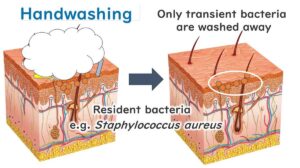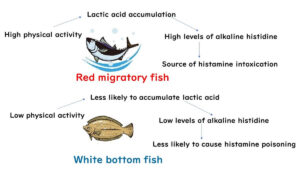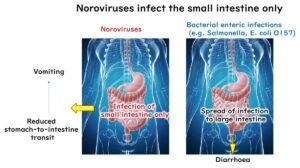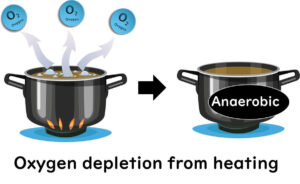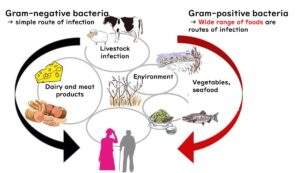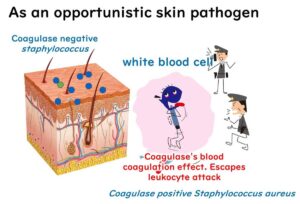Disinfection vs. Cleaning in Food Safety: Why Thorough Cleaning is the Foundation
To understand the essential strategies of disinfection and cleaning in a food production facility, consider a hypothetical scenario involving Mr. Yamada, a factory worker. Imagine him attempting to disinfect his boots by immersing them in a disinfectant tray at the factory entrance, despite significant food residue on the soles. This situation highlights a critical insight into microbial disinfection: mere disinfection without proper cleaning is ineffective.
The Science of Handwashing: Removing Transient Bacteria vs. Managing Resident Flora
Daily handwashing effectively removes dirt and transient bacteria picked up from the environment. However, it cannot eliminate the resident bacteria that naturally live on our hands. For example, Staphylococcus aureus (staph), a common bacterium, often remains untouched and may even be brought to the surface during washing. This increases the risk of contaminating food. This article explores the microbiological principles behind handwashing, highlighting its limitations and the implications for food safety.
Histamine forming bacteria
In this article, we will explore the types of food that commonly lead to histamine food poisoning, the causes, symptoms of histamine food poisoning, prevention methods, the bacteria that produce histamine, why the histidine decarboxylation reaction occurs in bacteria, the fact that heating food does not eliminate histamine once it's formed, and the misconception that fish is the only cause of this issue.
Understanding Cronobacter sakazakii: Risks, Prevention, and Safe Formula Preparation for Infants
In this article, let's unravel the mystery of Cronobacter sakazakii, a bacterium that's causing concern due to its sneaky way of contaminating infant formula. We'll tackle why this particular germ is worrisome for babies and also discuss the dos and don'ts when preparing baby formula, all from the viewpoint of keeping those tiny tots safe.
Norovirus: Characteristics, Transmission Routes, and Effective Prevention
Discover how noroviruses impact food safety through their unique characteristics and surprising survival strategies. This article explores their transmission routes, resilience, and practical methods to prevent norovirus food poisoning.
Clostridium perfringens: How to Prevent Food Poisoning from the 'Cafeteria Germ' in Bulk Meal Preparation
Clostridium perfringens, commonly referred to as the "cafeteria germ," is a key cause of large-scale food poisoning outbreaks, particularly in high-volume meal preparation settings. This bacterium thrives in warm, oxygen-free environments, often found in slow-cooling dishes like stews and curries. In this article, we explore the unique traits of C. perfringens, its role in foodborne illness, and critical steps for preventing contamination to ensure food safety in catering facilities, cafeterias, and restaurants.
Listeria monocytogenes: Risks, Regulations, and Effective Control in Ready-to-Eat Foods
This article explores Listeria monocytogenes, a resilient Gram-positive bacterium responsible for severe foodborne illness, particularly affecting pregnant women, the elderly, and those with weakened immune systems. Learn why this pathogen is a critical concern in ready-to-eat foods such as deli meats, cheeses, and smoked seafood. We delve into its unique survival abilities, its high fatality rate in outbreaks, and the regulatory differences across the U.S., EU, and Japan. Discover best practices and strategies to control this persistent threat in food production and safeguard public health.
Staphylococcus aureus: From Skin Infections to Heat-Resistant Food Toxins – Your Essential Guide
Staphylococcus aureus is a bacterium that walks a fine line between being a harmless resident of mammalian skin and a dangerous cause of foodborne illnesses. In this guide, we explore its habitats, how it produces heat-resistant enterotoxins, and its dual role as an opportunistic pathogen. Whether you're a microbiology enthusiast or a food safety manager, this post will provide you with practical insights into managing the risks associated with S. aureus.
Clostridium botulinum: From Soil Microbe to Deadly Toxin – A Deep Dive into Food Safety Risks
Clostridium botulinum, the bacterium behind the infamous botulinum toxin, stands out as both a scientific curiosity and a major concern in food microbiology. Known for producing the world's most potent biological toxin, this microorganism poses critical challenges for food safety professionals. Why does it create such a deadly toxin? How does it persist in common foods? In this blog, we explore the bacterium's survival strategies, the foods most at risk, and the distinctions between its toxin-producing types. Whether you’re a microbiology student or a food industry expert, uncover essential insights into this remarkable yet alarming microbe and its implications for food safety.
Bacillus cereus: Understanding Food Safety Risks and Effective Prevention
Explore the hidden world of Bacillus cereus, a persistent and often-overlooked bacteria found in everyday meals. Learn how it thrives—from the unnoticed corners of your kitchen to the plate on your table. Understand the two distinct patterns of food poisoning it causes: one marked by nausea and vomiting, the other by persistent diarrhoea. Most importantly, discover the critical kitchen strategy of rapid cooling to stop this heat-resistant microbe from multiplying. Ready to take control and protect your meals from this silent threat?

